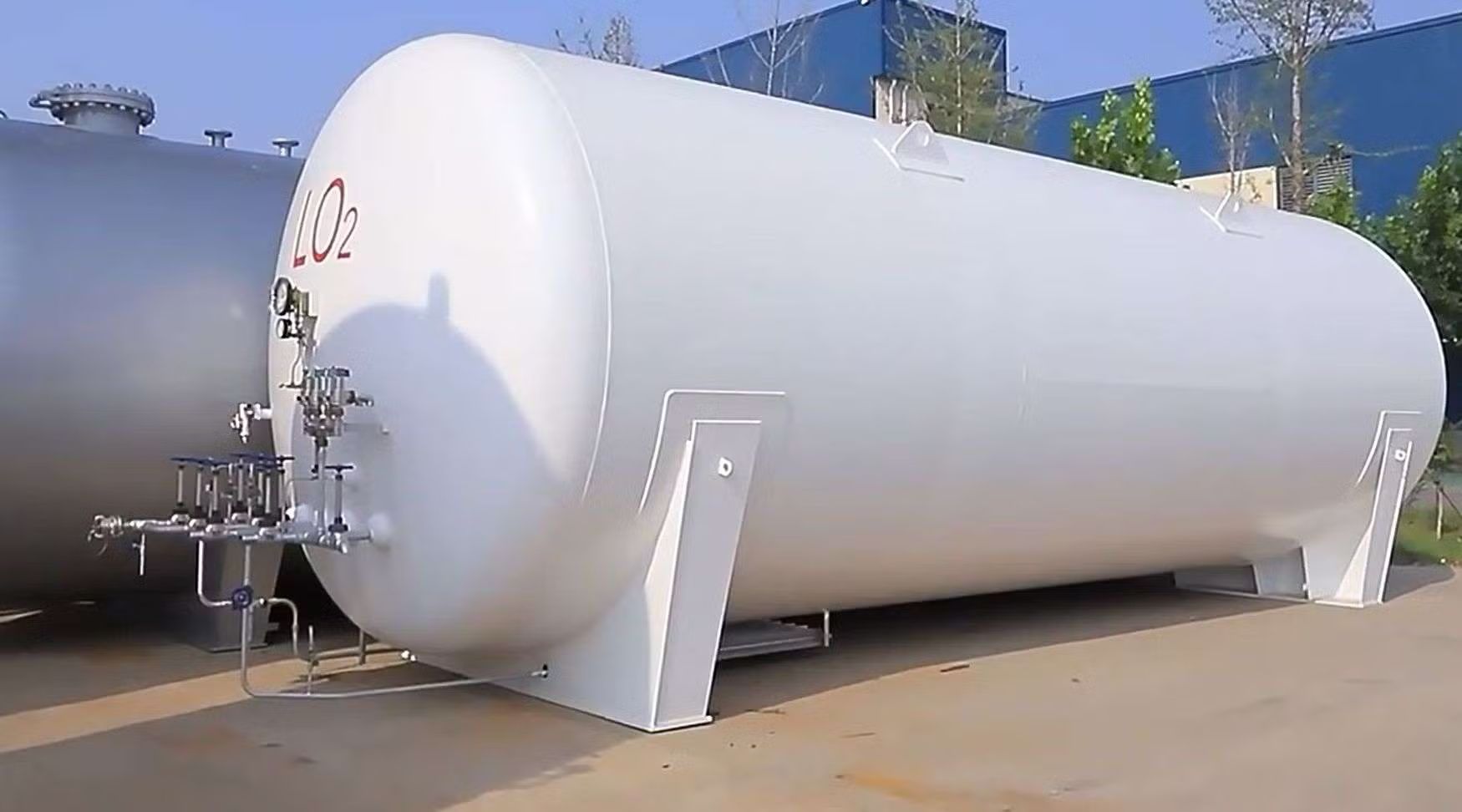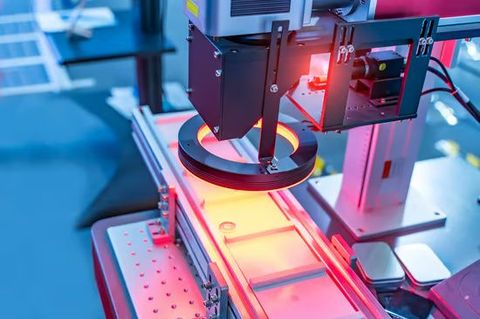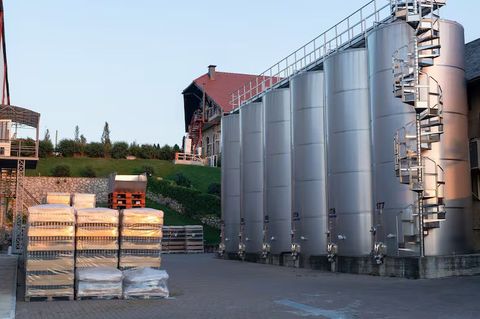Discover Cryogenic Tanks: Smarter Solutions for Extreme Temperatures
Cryogenic tanks are specialized storage systems designed to hold materials at extremely low temperatures, typically below –150°C. These tanks are essential for handling gases in their liquefied states, such as liquid nitrogen, liquid oxygen, liquefied natural gas (LNG), and liquid hydrogen.
These extreme temperatures are necessary because many gases become more compact and stable when cooled to cryogenic levels. For example:

-
Natural gas becomes easier to transport when liquefied.
-
Medical oxygen must often be stored in cryogenic form for hospitals and laboratories.
-
Cryogenic nitrogen supports biological preservation and industrial cooling.
Over the years, industries including healthcare, energy, manufacturing, and research needed safe and reliable storage systems to maintain these low temperatures. Cryogenic tanks were developed to meet these requirements while preventing heat transfer, pressure buildup, and material degradation.
Importance – Why Cryogenic Tanks Matter Today
Cryogenic tanks play a major role in sectors that depend on temperature-sensitive materials. Their importance has grown due to global energy demands, medical needs, and scientific progress.
1. Essential for Energy and Fuel
Cryogenic tanks store LNG and liquid hydrogen, both of which are used for:
-
Power generation
-
Industrial heating
-
Clean energy solutions
-
Transportation fuel
With the global push toward lower-emission alternatives, these tanks support energy transition efforts.
2. Critical in Healthcare
Hospitals rely heavily on cryogenic oxygen tanks for:
-
Ventilation systems
-
Emergency care
-
Surgical procedures
-
Laboratory testing
Cryogenic nitrogen is also used for preserving biological samples and supporting medical research.
3. Industrial and Manufacturing Applications
Industries use cryogenic materials for:
-
Metal processing
-
Food freezing
-
Semiconductor manufacturing
-
Chemical reactions requiring extreme cooling
Cryogenic tanks ensure safe and consistent supply.
4. Supports Scientific Research
Cryogenic technology is essential in:
-
Space research
-
Particle physics
-
Cryopreservation
-
Biotechnology
Researchers use cryogenic tanks to store sensitive samples and fuels.
5. Ensures Safety and Efficiency
These tanks help solve problems such as:
-
Heat infiltration into sensitive materials
-
Pressure instability
-
Risks of gas expansion
-
Contamination or degradation of stored materials
By providing controlled environments, cryogenic tanks enable industries to operate safely and efficiently.
Recent Updates – Trends and Developments in the Last Year
The cryogenic storage industry has seen notable advancements and changes from 2024 to 2025.
1. Growing Use of LNG for Cleaner Energy
With many countries increasing LNG imports, demand for large-scale cryogenic tanks rose significantly in 2024. Companies invested in advanced insulation to reduce energy loss during transport.
2. Hydrogen Storage Expansion
Hydrogen gained momentum as a clean fuel, and cryogenic hydrogen tanks saw major improvement in materials and safety controls during 2024–2025, supporting mobility and industrial applications.
3. Improvements in Tank Insulation
New insulation materials such as aerogel-composite panels gained popularity due to better thermal performance and lower boil-off rates.
4. Automation and Smart Monitoring
Modern cryogenic tanks now include:
-
Remote temperature monitoring
-
Pressure sensors
-
Predictive maintenance alerts
-
Automated venting systems
These upgrades became common in 2024, helping facilities improve safety and reduce losses.
5. Increased Focus on Safety Standards
Manufacturers strengthened safety protocols, improving features like multi-layer shells, double-walled designs, and emergency pressure relief valves.
Laws or Policies – Regulations Affecting Cryogenic Tank Use
Cryogenic tanks must meet strict regulations due to their unique safety risks and industrial importance. Key regulatory areas include:
1. Pressure Vessel Standards
Most countries follow international standards such as:
-
ASME Boiler and Pressure Vessel Code (BPVC)
-
ISO 21009 for cryogenic vessels
-
EN 13458 for vacuum-insulated tanks
These policies define material strength, testing procedures, and design approvals.
2. Transportation Regulations
Cryogenic materials used in LNG trucks or medical supply chains follow rules like:
-
Road transport safety regulations
-
Hazardous materials handling guidelines
-
Temperature and pressure monitoring standards
These ensure safe transfer between facilities.
3. Environmental Regulations
Energy sectors using LNG or hydrogen tanks must comply with:
-
Emission reduction policies
-
Leak detection requirements
-
Containment guidelines for accidental releases
Many governments encourage low-emission fuels, indirectly increasing demand for cryogenic storage.
4. Workplace Safety Rules
Factories and hospitals using cryogenic tanks must follow:
-
Training requirements
-
Emergency procedures
-
Ventilation and oxygen monitoring rules
These ensure worker safety around extreme cold and high-pressure systems.
Tools and Resources – Helpful Platforms and Services
Several tools and resources support the selection, monitoring, and safe use of cryogenic tanks:
Software and Monitoring Tools
-
Cryogenic Tank Level Measurement Systems – track liquid levels
-
SCADA Platforms – remote pressure and temperature control
-
Gas cylinder tracking apps – manage inventory and ordering
Engineering and Design Tools
-
Cryogenics calculators for cooling load, boil-off rate, and tank efficiency
-
Material strength calculators for low-temperature stress analysis
-
Thermal insulation modeling tools
Knowledge Resources
-
International Cryogenic Engineering Conference (ICEC) research papers
-
Gas industry knowledge sites like Linde, Air Liquide, Air Products
-
Engineering forums discussing cryogenics and industrial gases
Training Resources
-
Online safety training for cryogenic handling
-
University research guides
-
Engineering webinars on extreme temperature materials
Table: Common Cryogenic Tank Types and Their Uses
| Tank Type | Primary Use | Stored Material | Key Feature |
|---|---|---|---|
| Vacuum-Insulated Tanks | Industrial gas storage | Liquid nitrogen, oxygen | Double-wall design |
| LNG Cryogenic Tanks | Energy and fuel | Liquefied natural gas | Large capacity |
| Dewar Flasks | Laboratory use | Small-volume cryogens | Portable |
| Mobile Cryogenic Tanks | Transport | Medical oxygen, industrial gases | Reinforced shells |
| Hydrogen Cryogenic Tanks | Clean energy | Liquid hydrogen | High-strength materials |
FAQs
1. What materials are cryogenic tanks made of?
They are typically made from stainless steel, aluminum alloys, and sometimes nickel-based materials. These metals maintain strength at extremely low temperatures and resist thermal contraction.
2. How do cryogenic tanks stay cold?
They use vacuum insulation, multi-layer insulation (MLI), and special materials that minimize heat transfer. This slows down warming and reduces boil-off losses.
3. What gases are commonly stored in cryogenic tanks?
Commonly stored materials include liquid nitrogen, oxygen, hydrogen, argon, carbon dioxide, and LNG. Each requires specific temperature and pressure conditions.
4. Can cryogenic tanks be transported?
Yes, cryogenic tanks come in both fixed and mobile designs. Transport versions follow strict vehicle safety rules and have additional reinforcement.
5. What safety precautions are needed?
Basic precautions include proper ventilation, protective gloves, oxygen monitoring, regular inspection, and safe handling of extreme cold surfaces and high-pressure systems.
Final Thoughts
Cryogenic tanks play a vital role in energy, healthcare, manufacturing, and scientific research by safely storing and handling materials at extreme low temperatures. As clean energy technologies, LNG demand, and medical oxygen requirements continue to grow, cryogenic storage solutions remain central to modern industrial operations. With advancements in insulation, automation, and global safety standards, cryogenic tanks have become smarter, safer, and more efficient. Understanding how they work helps industries make informed decisions and achieve reliable long-term performance.





